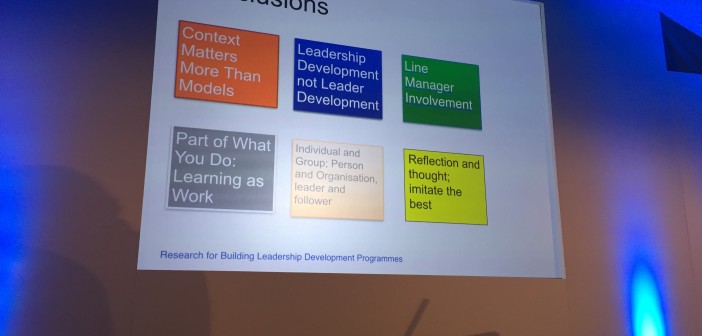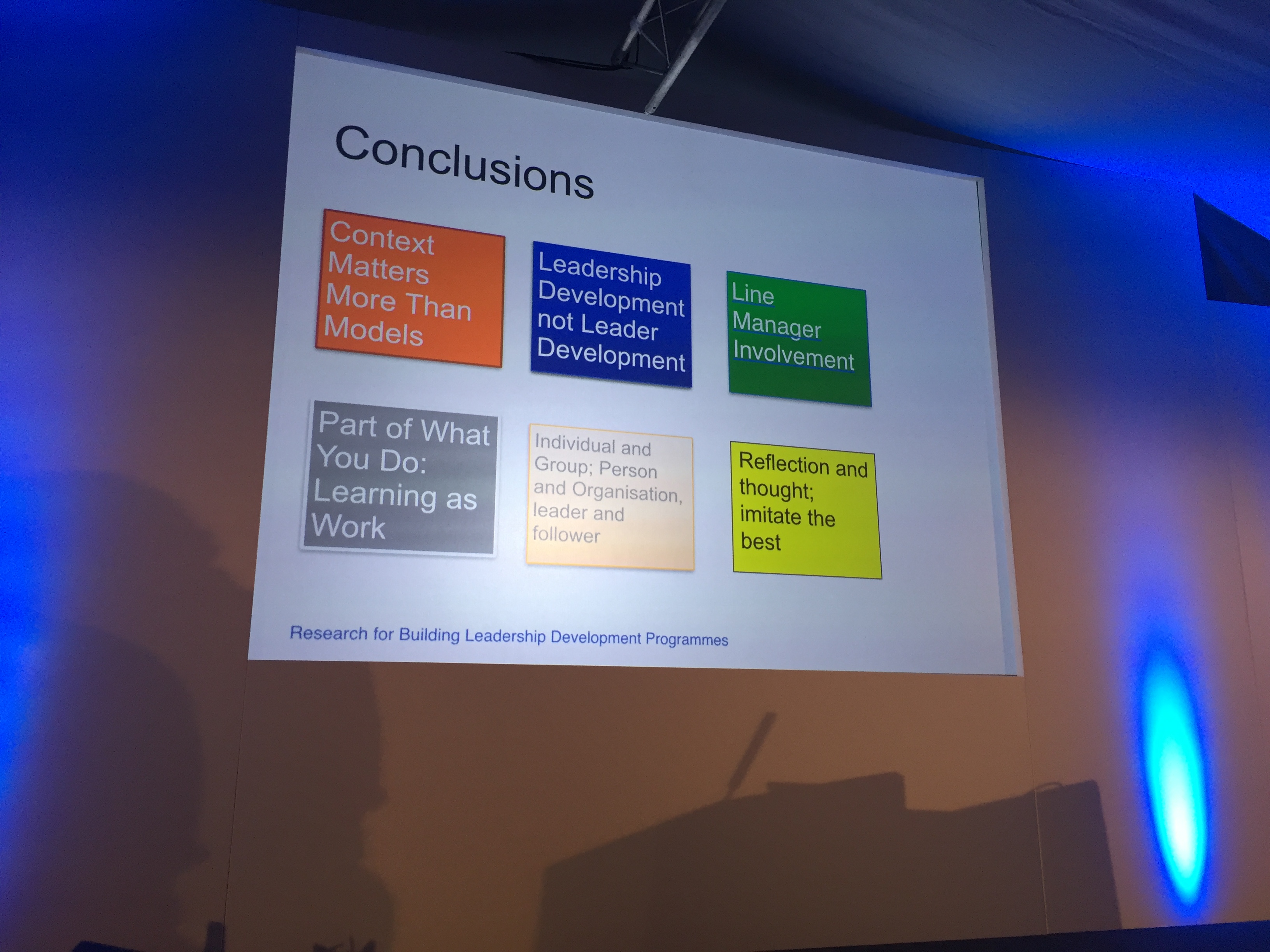This might seem like an overly simplistic review of what was an interesting two-day conference but for all the sessions I went to I felt there was one clear message for L&D professionals. That message was articulated in the following two slides.
Designing effective learning is hard
This is one of the concluding slides from Nigel Paine’s session about developing effective leadership development programmes. Paine, author of Building Leadership Development Programmes, shared evidence that shows most leadership programmes don’t work. In fact, the research that shows what does work shows that there are only a handful of behaviours that need to be developed in leaders.
Paine urged delegates not to buy off the shelf programmes, instead creating bespoke programmes that develop these behaviours in the context of the organisation. The problem with this approach is that it is hard to do. There is pressure for organisations to lay on off-site programmes when that is the last thing that is needed because they don’t work. What is needed is a programme designed by L&D and delivered in the work environment using real work challenges and feedback from those being led. This is where behaviour change starts.
However, it is much easier to take the off-the-shelf route and that is why designing behaviour changing learning is much harder work.
But there is a way to do it . . .
If slide one was a bit depressing, slide two provides a way to deliver learning in new ways.
In his session, Nick Shackleton-Jones from PA described his approach to creating useful, relevant learning. His approach is two-fold: first, simulate real work challenges. This helps colleagues connect with learning at an emotional level. If it is a challenge that relates to them then they will care about it. Caring about it means they will be motivated to do something about it. Second, build resources that help people get the job done.
At the heart of Shackleton-Jones’ approach is the user, the employee. He watches and listens to employees and asks questions about their work challenges. Once he is armed with that data he can start the design process.
This is a completely different approach to buying off-the-shelf solutions.
Over the two days of the conference, speakers shared their stories of how they were tailoring learning to the specific needs of their learners within the specific contexts of their organisations. This is not to say that third party suppliers are not involved. Of course they are. No, the point here is that L&D are doing the hard work of establishing the actual need first and exploring new ways of delivering digital learning that relates directly to, and reflects, the context of the organisation. This brings learning closer to work.
So, the most effective learning will require hard work and challenge to preconceived ideas about what L&D is. However, this conference showed that there are L&D professionals that are starting to take different approaches.
Here are some other reviews of the conference . . .






